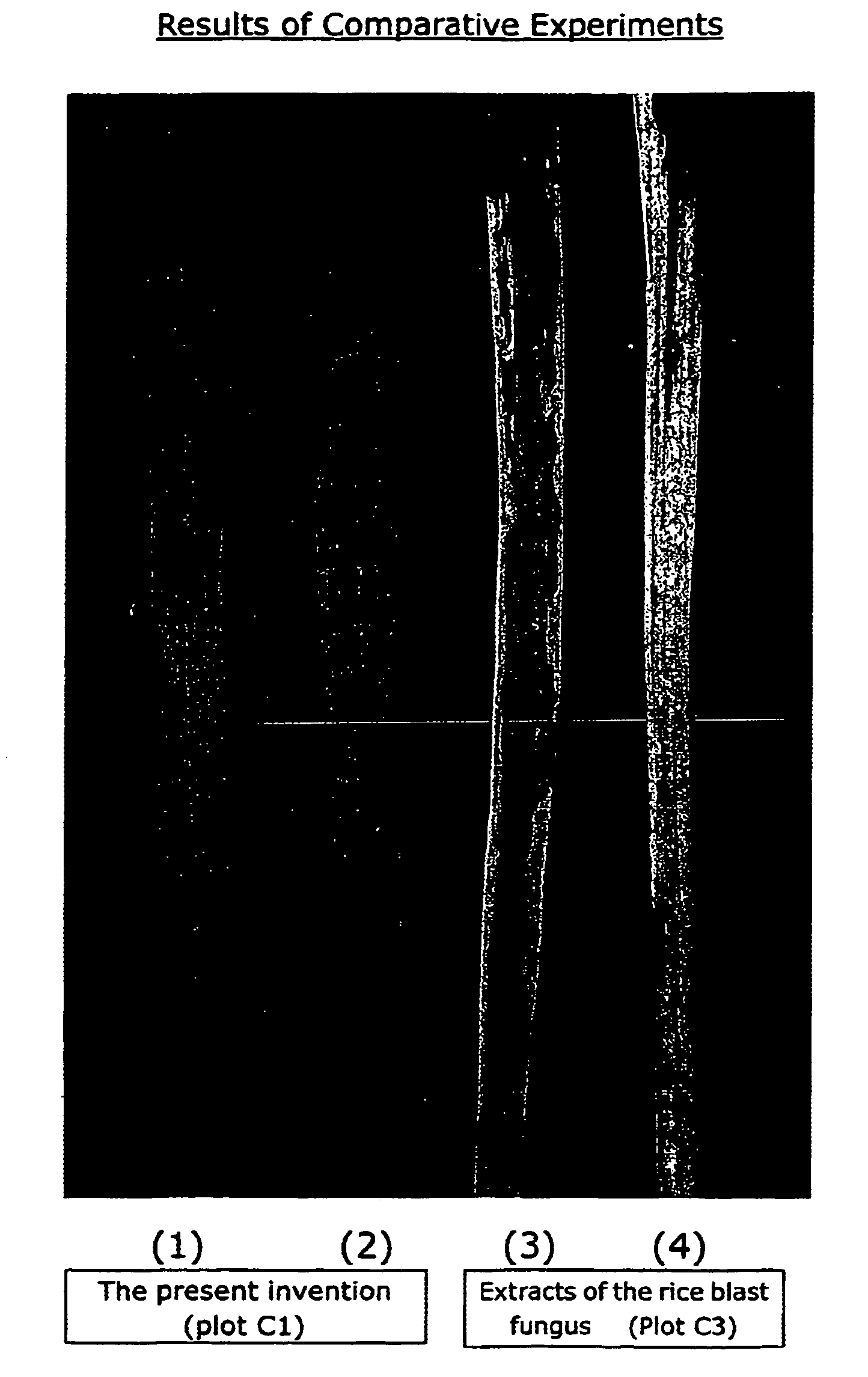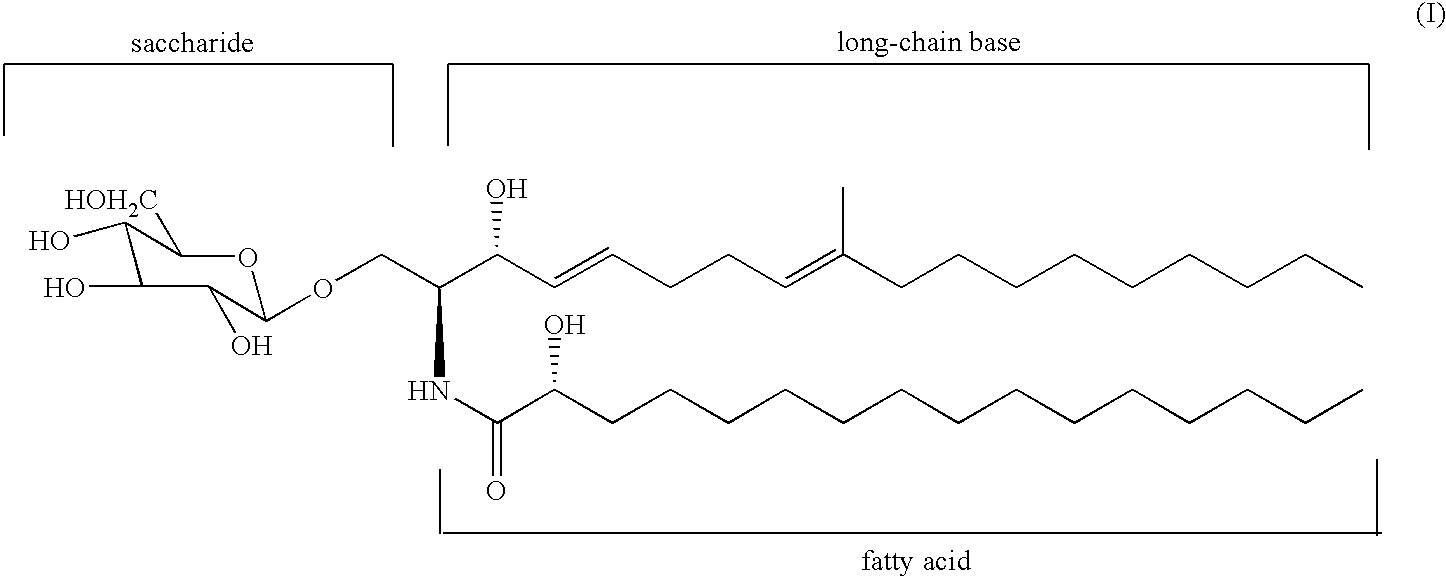Compositions inducing plants disease-resistance and process for producing the same
- Summary
- Abstract
- Description
- Claims
- Application Information
AI Technical Summary
Benefits of technology
Problems solved by technology
Method used
Image
Examples
example 1
Production of Plant Disease Resistance-inducing Composition
(1) Organic Solvent Extraction Step
[0055]A dried shiitake mushroom (Lentinus edodes) was ground in a power mill (table power mill P-02, manufactured by SHOWA GIKEN INDUSTRIAL CO., LTD.), and a ground product was collected through a screen having an opening size of 1.0 mm. To 1 kg of the ground product of the dried shiitake mushroom was added 5 liters of 99.5% ethanol. The mixture was kept at 25° C., and extraction was carried out for 24 hr with stirring, followed by solid-liquid separation into a first ethanol extract and the residue. Further, the residue was dipped in 5 liters of 99.5% ethanol for 30 min to wash the residue, followed by separation into a second ethanol extract and the residue. The first and second ethanol extracts were combined together to provide an ethanol extract.
(2) Concentration / separation Step
[0056]The combined ethanol extract provided in the organic solvent extraction step was concentrated under atm...
example 2
[0060]For comparison of the cerebroside extraction rate between different organic solvents, the amounts of cerebroside B and cerebroside D extracted from a raw shiitake mushroom were measured to determine the cerebroside B and cerebroside D contents of the extract. Methanol, ethanol, chloroform, acetone, n-hexane, and ethyl acetate were used as comparison organic solvents. Each solvent (150 ml) and 30 ml of water were added to 100 g of the raw shiitake mushroom which was then attrited in a watering blender (Ace Homogenizer AM-7, manufactured by Nihon Seiki Seisakusho Co., Ltd). The attrited liquid was transferred to a centrifugal sedimentation tube and was then shaken on a shaker (a spinning reciprocal shaker R-30, manufactured by TIETECH Co., Ltd.) for 12 hr to extract cerebrosides into the organic solvent layer. The amounts of solvent-extracted cerebrosides were measured by the above HPLC and were expressed in terms of the amounts of cerebroside B and cerebroside D per g of the ra...
example 3
Relationship Between Cerebroside B Content, Lipid Content, and Concentration Ratio and Protective Value for Rice Blast
[0062]Concentrates with respective concentrations provided in the course of the preparation of ethanol extract concentrate A in Example 1, and a solution obtained by further concentrating extract concentrate A were examined for the liposoluble substance content, the cerebroside B content, and the control effect for rice blast. For the concentrations of the individual concentrates, the ethanol extract after the completion of the extraction step was regarded as a one-fold diluted solution, and the ratio of the amount of the liquid after the completion of the extraction to the amount of the liquid after each concentration operation in the concentration / separation step was regarded as the concentration ratio. In this way, 1-, 2-, 5-, 10-, 20-, 30-, and 50-fold diluted solutions were provided for the test. The liposoluble substance content was expressed in terms of an n-h...
PUM
| Property | Measurement | Unit |
|---|---|---|
| Density | aaaaa | aaaaa |
| Density | aaaaa | aaaaa |
| Fraction | aaaaa | aaaaa |
Abstract
Description
Claims
Application Information
 Login to view more
Login to view more - R&D Engineer
- R&D Manager
- IP Professional
- Industry Leading Data Capabilities
- Powerful AI technology
- Patent DNA Extraction
Browse by: Latest US Patents, China's latest patents, Technical Efficacy Thesaurus, Application Domain, Technology Topic.
© 2024 PatSnap. All rights reserved.Legal|Privacy policy|Modern Slavery Act Transparency Statement|Sitemap


